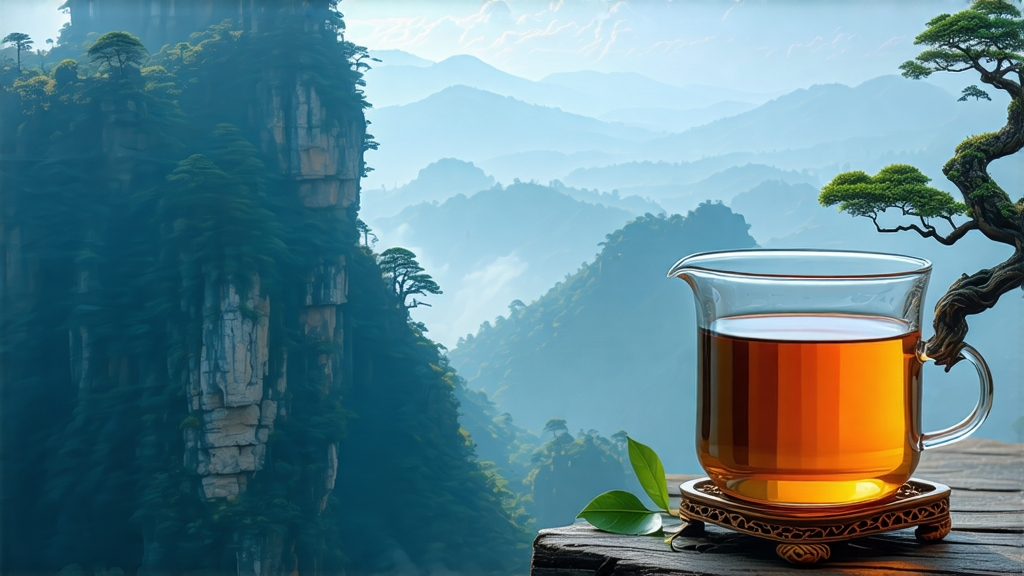
If green tea is the dewy youth of Chinese tea and pu-erh its venerable elder, Phoenix Dancong (Fenghuang Dancong) is the wandering poet—fragrant, elusive, and forever humming a different tune. Nestled in the granite spires of Phoenix Mountain (Fenghuang Shan) in northern Guangdong, this oolong family has captivated scholars, merchants, and emperors since the Song dynasty. Today it travels the world in tiny vacuum-sealed pouches, yet its soul still lingers in cool cloud-veiled gorges where 300-year-old tea trees cling to mineral-rich cliffs. To understand Phoenix Dancong is to listen to a single bush singing in many voices—orchid, almond, ginger flower, ripe mango, even mountain spring water itself.
-
From Tribute to Terroir: a 900-Year Journey
Local chronicles credit the She ethnic minority with first cultivating wild Camellia sinensis var. sinensis on Phoenix Mountain during the Southern Song. By the Ming, individual trees producing unusually aromatic leaves were selected, cloned, and registered; the Qing court listed “Song Zhong” (Song-era stock) as one of 24 imperial tributes. After the 1980s economic reforms, growers re-discovered ancient high-altitude gardens above 600 m. Instead of mass hedgerows, they preserved the tradition of “single-bush” management: every old tree is tagged, harvested, and processed separately, turning each into a micro-lot comparable to a single-vine wine. -
The Many Faces of One Name
“Dancong” literally means “single bush,” yet the term now embraces a stylistic family. More than 80 aromatic profiles have been documented, grouped under ten “fragrance types.” The most celebrated include:- Honey-orchid (Mi Lan Xiang): deep amber liquor, lingering lychee-honey sweetness.
- Almond (Xing Ren Xiang): roasted nut note balanced by brisk cliff-mineral bite.
- Ginger flower (Jiang Hua Xiang): heady floral lift reminiscent of hedychium.
- Yellow gardenia (Huang Zhi Xiang): creamy, almost custard-like finish.
- Eight immortals (Ba Xian): a kaleidoscope aroma that shifts from peach to herbal medicine as the cup cools.
Each profile originates from the same gene pool; the differences emerge through micro-terroir, tree age, and the charcoal baking regimen.
-
Crafting the Cliff Song: Pluck to Charcoal Basket
Harvest: Only tender tri-leaf sets are plucked by hand at dawn during late April, when mountain mist slows photosynthesis and concentrates aromatics.
Solar withering: Leaves are spread on bamboo screens under gentle morning sun for 15–20 minutes, softening cell walls and triggering grassy-volatile dissipation.
Indoor withering & shaking: Over six to eight hours the leaf is alternately rested and shaken in rattan trays. Edge bruising initiates enzymatic oxidation that will reach 30–40 %—higher than Tie Guan Yin yet lower than Da Hong Pao.
Green killing: A 260 °C drum roaster halts oxidation in two minutes, locking in the signature “green core with red fringe.”
Rolling & strip-shaping: Experienced hands press and twist leaves along the length, forming the trademark dark, ropey stripes.
Primary drying: 15 minutes at 90 °C reduces moisture to 20 %.
Charcoal baking: The soul step. Leaves are loaded in 3 cm layers onto rattan trays stacked inside a bamboo basket that rests over a low ember bed of local longan or lychee wood. Temperature is kept at 55–65 °C for two hours, rested for twenty days, then repeated; premium lots see three to five cycles. This micro-smoke and radiant heat polymerize residual sugars, creating the caramelized, cliff-stone depth that distinguishes Dancong from greener oolongs. -
Brewing the Mountain in a Tiny Pot
Teaware: A 100 ml zisha (Yixing clay) teapot seasoned only with Dancong, or a gaiwan for comparative tasting.
Leaf ratio: 6 g for 100 ml, enough to fill the vessel one-third after leaf expansion.
Water: Spring water at 98 °C; hard tap flattens floral volatiles.
Rinse: